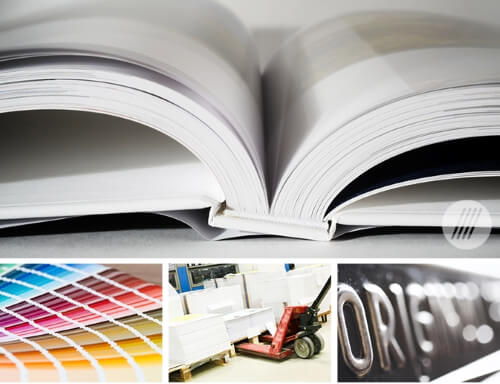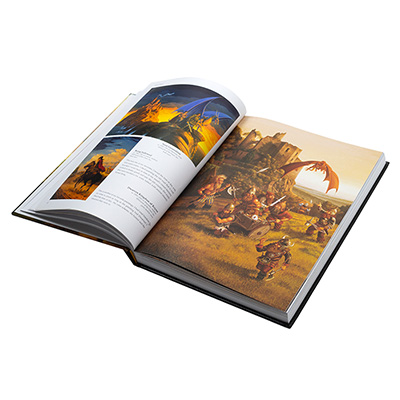Key Steps to Budgeting a High-End art book Production
Key Steps to Budgeting a High-End art book Production
Blog Article
Comprehending the Refine Behind High-grade Art Book Printing for Art Lovers
When it concerns premium art book printing, recognizing the intricacies of the process can raise your recognition for the final item. You could not recognize how essential paper option and ink choices are to the vibrancy of artwork. Each element plays a substantial role in accomplishing the desired impact. As you discover the various parts of art book printing, you'll discover understandings that can transform your perspective on art preservation and discussion.
The Importance of Paper Option in Art Book Printing
When it concerns art book printing, the choice of paper can make or break the end product. You want your artwork to shine, and the best paper boosts color vibrancy and information. Take into consideration elements like weight, texture, and coating; these components considerably influence how viewers perceive your work.
For circumstances, a heavier stock communicates top quality and resilience, while a distinctive finish can include deepness to images. Smooth paper is excellent for detailed recreations, allowing fine lines and subtle tones to appear crisp.
Don't ignore the paper's illumination; a brighter sheet can assist shades pop, making your art much more attractive. You'll additionally desire to consider exactly how the paper interacts with inks and whether it can take care of the printing procedure without deforming or bleed-through. Ultimately, selecting the best paper establishes the stage for your art, ensuring it catches the audience's focus simply as you imagined.
Picking the Right Inks for Lively Recreations
Picking the best inks is equally as crucial as selecting high quality paper to accomplish vibrant reproductions in your art book. When you're publishing art work, you desire shades that stand out and precisely stand for the original piece. Opt for inks with a high pigment concentration; these have a tendency to create richer and extra saturated shades.
You may think about utilizing archival inks, which resist fading over time, ensuring your art book stays as striking as the day it was published. If you're working with photos or electronically developed art, pigment-based inks can provide a wider shade range, boosting information and depth.
Do not forget about the coating! Matte and shiny inks can substantially modify the look of your art work, so think of the appearance you're intending to achieve - art book. Ultimately, the best ink choice enhances your paper option, creating a sensational visual experience for your readers
The Role of Color Management in Print Quality
Shade monitoring plays a necessary function in accomplishing high print high quality for your art book. It guarantees that the shades you see on your display translate properly to the printed web page. Without effective shade administration, your vivid art work might appear dull or altered, threatening your creative vision.
To begin, calibrate your screen on a regular basis. This step aids keep consistent color depiction. Next, utilize shade accounts tailored for your printer and paper type. These profiles assist the printer in duplicating shades precisely, minimizing inconsistencies in between digital and printed variations.
When you prepare your documents, take into consideration making use of a color area like Adobe RGB or CMYK, depending upon your printer's specifications. Constantly evidence your job, also; a test print can reveal any kind of possible color issues prior to the final run. By focusing on shade management, you protect the integrity of your art, guaranteeing your audience experiences it as you planned.

Understanding Various Binding Techniques
Accomplishing the excellent look for your art book exceeds shade management; binding methods likewise play a considerable function in its overall discussion and durability. You have a number of options to review, each with its very own distinct features.
If you're going for a specialist feeling, situation binding uses a durable alternative with a hard cover, excellent for showcasing your art work. On the other hand, excellent binding gives an adaptable spinal column while keeping expenses down, making it a preferred option for softcover books.
Spiral binding permits your art book to lay flat, which is terrific for displaying images without blockage. Saddle stitching is perfect for smaller booklets, giving a tidy surface without the bulk.
Eventually, the binding technique you pick must mirror your imaginative vision and exactly how you desire viewers to involve with your job. See to it to consider these alternatives carefully to achieve the very best end result for your task.
The Effect of Print Size and Layout on Presentation
While the selection of print dimension and format might appear second to material, they significantly influence exactly how your art work is regarded. The dimensions of your prints can either enhance or decrease the effect of your items. Bigger prints can draw viewers in, enabling them to value complex information, while smaller formats may need more intimate involvement.

Conservation Techniques for Durable Art Books
To assure your art publications stand the examination of time, it's crucial to carry out efficient conservation strategies. Use acid-free storage space boxes or safety sleeves to secure them from dust and physical damage.
When managing your books, always wash your hands or use cotton handwear covers to stay clear of oils and dust moving onto the web pages. Prevent bending or wrinkling the spinal columns; instead, use book sustains when displaying them.
For added security, take into consideration investing in archival-quality products for any type of repair work or enhancements. On a regular basis check your collection for indications of wear or damage, resolving problems immediately. By complying with these simple techniques, you can guarantee your art books stay vivid and easily accessible for many years to come, preserving their elegance and worth for future generations.
Working together With Printers for Optimum Results
When you prepare to publish your art book, selecting the right printer is important to achieving your vision. Clear interaction about your expectations and requirements will aid guarantee that both you and the printer are on the same web page. Allow's explore exactly how to make this partnership as seamless and efficient as feasible.
Picking the Right Printer

Effective Communication Techniques
Efficient interaction is essential for turning your art book vision into truth, especially when collaborating with printers. art book. Start by clearly describing your project's objectives, consisting of layout components, recommended products, and any specific printing methods. Do not wait to share your motivations and recommendations; this helps the printer recognize your visual
Establish normal check-ins to go over development and attend to any concerns. Usage visuals, like mock-ups or samples, to convey your browse around here ideas better. Be open to responses, as printers commonly have important insights that can boost your job. Finally, maintain a positive connection by being considerate and appreciative of their competence. This cooperation will guarantee that your art book fulfills your assumptions and shines in its final type.
Regularly Asked Questions
What Are Usual Blunders to Stay Clear Of in Art Book Printing?
When publishing your art book, stay clear of typical errors like inadequate resolution pictures, incorrect shade profiles, and ignoring page design. Don't fail to remember to check and verify details to confirm your final item satisfies your expectations.
Just How Does Digital Printing Differ From Traditional Printing Techniques?
Digital printing uses electronic data to create prints straight, enabling for quicker turn-around and customization. On the other hand, standard methods involve physical plates, which can be time-consuming and much less adaptable for small runs or unique layouts.
What Is the Normal Turnaround Time for Art Book Printing?
The regular turnaround time for art book printing varies, but you can anticipate it to take anywhere from a couple of weeks to several months. Variables like complexity, amount, and printing technique all affect this timeline.
Can I Publish a Restricted Version Art Book Financially?
You can publish a limited edition art book economically by selecting economical products, enhancing print runs, and making use of electronic here are the findings printing alternatives. Careful preparation and budgeting will certainly help you achieve top quality without overspending.
What Are the Environmental Factors To Consider in Art Book Printing?
When thinking about art book printing, you need to assume concerning environment-friendly products, sustainable inks, and energy-efficient processes (art book). Selecting neighborhood printers can additionally minimize your carbon impact, making your job both attractive and ecologically liable
Report this page